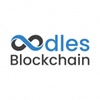In recent years, the cryptocurrency market has witnessed exponential growth, accompanied by an increasing demand for crypto exchange platforms. Among the various types of exchanges available, white label crypto exchange have emerged as a popular choice for businesses looking to enter the crypto trading space quickly and efficiently. While these platforms offer numerous benefits, ensuring robust security measures is paramount to safeguarding users’ assets and maintaining trust in the platform. In this blog post, we delve into the comprehensive security aspects of white label crypto exchanges.
1. Encryption and Data Protection:
- Implementing robust encryption protocols, such as SSL/TLS, to secure communication channels and protect sensitive user data from unauthorized access.
- Utilizing advanced encryption algorithms to safeguard stored data, including user credentials, private keys, and transaction details.
2. Multi-layer Authentication:
- Enforcing multi-factor authentication (MFA) mechanisms, such as biometric verification, OTP (one-time password), or hardware tokens, to add an extra layer of security during login and transaction authorization.
- Offering options for users to customize their security settings and enable additional authentication measures based on their preferences.
3. Cold Storage Solutions:
- Integrating cold storage solutions to store a significant portion of users’ assets offline, reducing the risk of hacking attacks and unauthorized withdrawals.
- Implementing robust procedures for transferring funds between cold and hot wallets, with strict authorization protocols and multiple layers of verification.
4. DDoS Protection:
- Deploying dedicated Distributed Denial of Service (DDoS) protection mechanisms to mitigate the risk of service disruptions caused by malicious attacks aimed at overwhelming the exchange’s infrastructure.
- Collaborating with reputable DDoS mitigation service providers to continuously monitor and mitigate potential threats in real-time.
5. Regulatory Compliance:
- Ensuring compliance with relevant regulatory requirements and industry standards to mitigate legal and compliance risks associated with operating a crypto exchange platform.
- Implementing robust Know Your Customer (KYC) and Anti-Money Laundering (AML) procedures to verify user identities and prevent illicit activities on the platform.
6. Audit and Penetration Testing:
- Conducting regular security audits and penetration testing exercises to identify vulnerabilities and weaknesses in the exchange’s infrastructure and application code.
- Engaging third-party cybersecurity firms to perform comprehensive assessments and provide recommendations for enhancing the platform’s security posture.
7. Real-time Monitoring and Alerts:
- Implementing real-time monitoring tools and intrusion detection systems to detect and respond to suspicious activities, anomalous behavior, or security incidents promptly.
- Configuring automated alerts and notifications to alert administrators and users about potential security threats or unauthorized access attempts.
8. Continual Security Updates:
- Regularly updating and patching the exchange’s software and infrastructure to address known security vulnerabilities and mitigate emerging threats.
- Establishing a robust change management process to ensure that updates are thoroughly tested and deployed without disrupting the platform’s availability or functionality.
9. User Education and Awareness:
- Providing comprehensive educational resources and guidelines to users on best practices for securing their accounts, protecting their private keys, and recognizing common security threats, such as phishing attacks and malware.
- Offering proactive support and guidance to users who may have security-related concerns or inquiries.
Conclusion
The security of a white-label crypto exchange is paramount to its success and trustworthiness in the market. By implementing a comprehensive security framework encompassing encryption, authentication, cold storage, DDoS protection, regulatory compliance, auditing, monitoring, continual updates, and user education, exchange operators can mitigate security risks and build a resilient and secure trading platform for their users. Investing in robust security measures not only protects users’ assets but also enhances the reputation and credibility of the exchange in the rapidly evolving crypto landscape.
Oodles Scaffold, the white-label crypto exchange of Oodles Blockchain, offers multiple customization options to choose from. Connect with our blockchain developers to get a demo today.


No comments yet